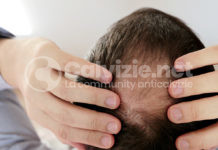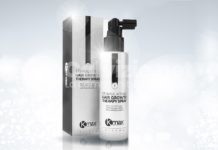Table of references on alopecia areata prevalence in families
It has long been suspected that genes play a role in development of alopecia areata. To support this claim, many dermatologists point to statistics that show alopecia areata occurs much more frequently in genetically related individuals. This suggests certain genes passed from generation to generation in a family can make offspirng more susceptible towards developing alopecia areata. Below is a list of medical journal reports that suggest how frequently someone with alopecia areata can claim a family history of the condition. The source of the data is also given as it may be that family prevalence changes with different regions of the world.
Table of references on stress as a factor for people with alopecia areata
Some, but by no means all, dermatologists claim that alopecia areata can be influenced, or even induced, by stress. It is not hard to see why when there are so many medical reports which seem to support this claim. However, there is a significant problem with almost all the studies below in that they do not compare stress levels in people with alopecia areata to the general population or a control group. Finally, one must also bear in mind the question – which comes first, stress which induces alopecia areata or alopecia areata which induces stress’ Note: Many of the studies report just a few cases and do not provide statistical information.
Table of references for the male to femal ratio of people affected with alopecia areata
Alopecia areata is suspected by many dermatologists be an autoimmune disease. In most other forms of autoimmune disease many more women than men are affected. For example, with Systemic Lupus Erythematosus, 10 women are affected for every one man (Ollier 1992). We might expect a similar bias for alopecia areata but not all research groups can demonstrate one.
Table of references for age bias in the first expression of alopecia areata
The first onset of alopecia areata can occur in any decade of life but it is generally regarded as most likely to first develop in younger individuals. However, looking at the statistical reports on the subject there seems to be a steady increase through time of alopecia areata first developing later in life. Is the change simply a result of different data collection methods or something more significant?
Table of references on finding alopecia areata in association with other clinical conditions
Alopecia areata has been reported in association with many other medical conditions. Most of these complaints are immunologically mediated or even autoimmune diseases. The presence of alopecia areata plus other immune conditions in individuals has been taken as indirect, circumstantial evidence that alopecia areata is also immunologically based. Note: Most medical journal papers below are case reports on just one or two people and statistical information was not provided.
Table of references for alopecia areata in assocaition with atopy (allergies)
When alopecia areata develops in an individual who has a history of atopy (allergies including asthma, eczema, and rhinitis) it is generally believed that the hair loss is likely to become more extensive, and be more resistant to treatment, compared to alopecia areata in someone with no atopy. The rate of atopy in people with alopecia areata is also believed to be greater than than in the general population. The prevalence of atopy in association with alopecia areata has been variably reported by different research groups.
Table of references for alopecia areata in association with nail or eye dystrophy
In evolutionary terms, our hair follicles, nails, eyes and teeth were all derived from the same basic structure. There are many similarities between these organs and it has been suggested that if the immune system can target hair follicles then why not other, related structures’ We certainly know that nails can be disrupted in people with alopecia areata (nails are just overgrown hair follicles). There are no recent publications on alopecia areata and aberrant teeth – although tooth decay was believed to cause alopecia areata by Jaquet and supporters at the turn of the century (Jacquet 1902, Decelle 1909). Only occasional comments have been made on alopecia areata in association with eye complications.
(source: keratin.com)
































